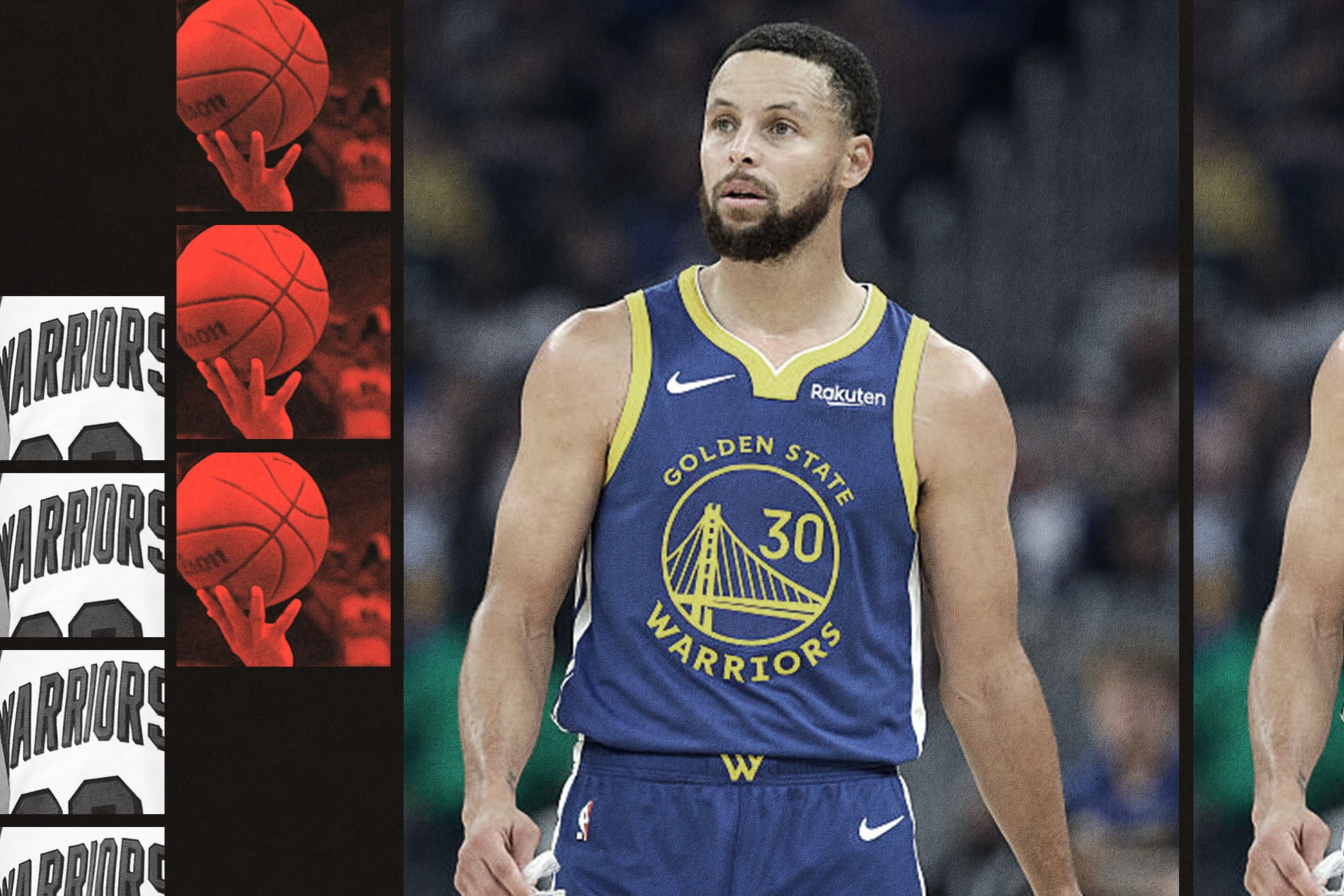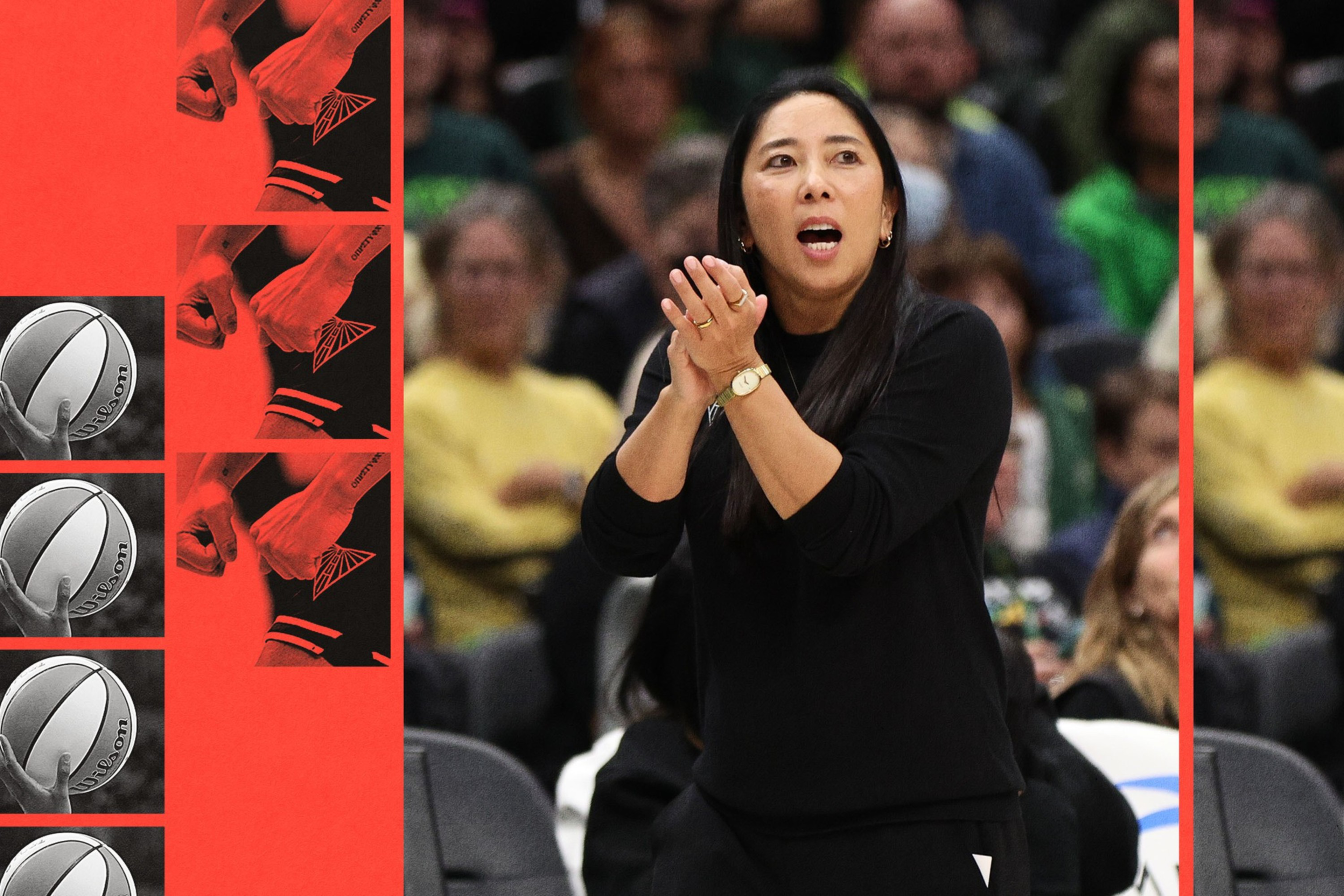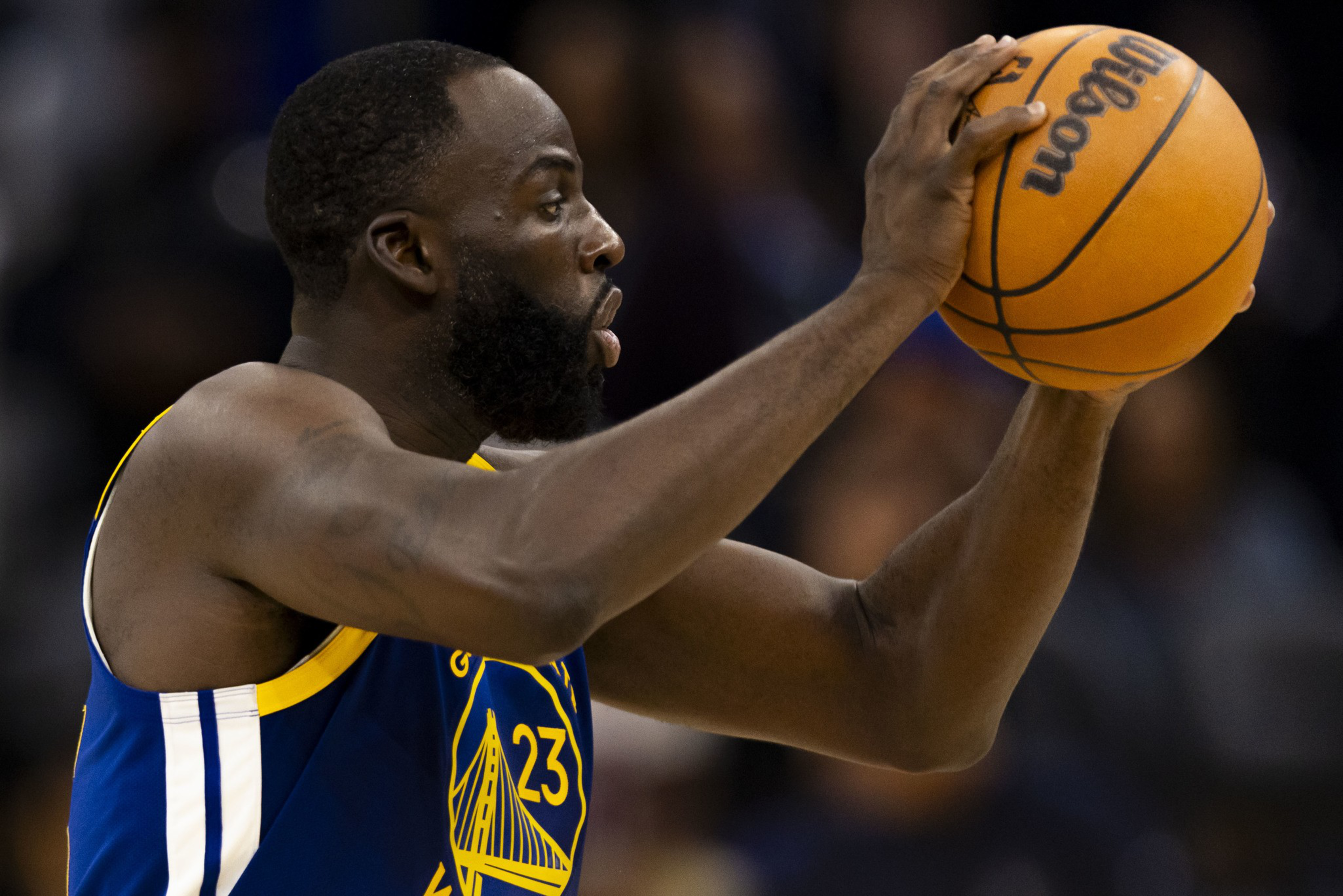Want more ways to catch up on the latest in Bay Area sports? Sign up for the Section 415 email newsletter here and subscribe to the Section 415 podcast wherever you listen.
On Tuesday night, as the Warriors struggled to emerge from the shards and smoke of their squashing loss in Oklahoma City, it was time to start thinking about a trade to shake things up.
Do it now, or the season’s toast!
On Wednesday night, after Stephen Curry, Draymond Green, and Jimmy Butler levitated the Warriors to a victory in San Antonio and ended a six-game road losing streak, it was time to turn off the DEFCON alert. Well, at least until the next losing streak.
Patience, patience — can everybody just be a little patient?
Section 415: Brock Purdy, Mac Jones, and the 49ers’ path to the playoffs

Section 415: Making sense of the Warriors’ uneven start

Section 415: How Natalie Nakase turned the Valkyries into an immediate force

It’s November. The Warriors are 7-6 and have 84% of the regular season left to play and more in the postseason, if they get that far. Patience is always the right approach in this and most situations.
But this early-season mood is a little different and a lot more urgent because nobody’s as young as they used to be and Jonathan Kuminga is the Warriors’ most marketable trade piece and potentially the player they’re most interested in moving.
Draymond isn’t always the voice everybody wants to hear blasting out the news, but he’s rarely wrong on these issues. And it was telling, even if he didn’t specifically mean to point all eyes at Kuminga’s situation, when Draymond brought up potential changes after the OKC humbling.
“I think everyone has a personal agenda in this league,” Green said when asked if agendas were messing up team chemistry. “But you have to make the personal agenda work in the team confines.
“If it doesn’t work, then you kinda gotta get rid of your personal agenda. Or eventually the agenda is the cause of someone getting rid of you.”
A day later, the Warriors went back to a version of the starting lineup that propelled them into the playoffs last season — Moses Moody in, Kuminga out — and looked energetic throughout the Spurs victory, which included Kuminga missing the second half with a knee injury.
These two games put together will not and should not directly lead to the Warriors deciding to trade Kuminga or anybody else. But the reason the negotiations with him took so long over the summer is that the Warriors made sure that the agreement (two years, $48 million, with only the first year guaranteed, at $23.5 million) was tradable.
Important note: Kuminga started the season well. There’s been a dip lately — and there will be many other times to deep-dive through Kuminga’s season as it goes. I’ve done one of them already. I’ll do more.

But the trade discussion always focuses on Kuminga because it still isn’t clear whether he fits on this team — in this golden era or in any bridge to the next period — and whether the Warriors could get something more helpful in a trade for him either this winter or in the offseason.
So let’s get the chatter started well before the usual trade season, just as a baseline as the Warriors go through more ups and downs. As usual, all of this is dependent on the mindset and positioning of the Warriors and all other teams and players and whether the Warriors can offer what other teams want.
But first, some important notes to guide the conversation — at least my part in it.
• As someone with a new deal, Kuminga can’t be traded until Jan. 15.
That might help the Warriors by forcing Mike Dunleavy, Steve Kerr, and Joe Lacob to hold off on any decision until more of the season has played out. It also might hurt the Warriors in trade talks because by then some of the more desperate teams might have fallen out of the playoff race. (I’m looking at you, Sacramento.)
• The Warriors have a pretty good idea about the teams that like Kuminga — or at least the ones that talked to him during his restricted free agency and contacted the Warriors about a potential sign-and-trade.
There are at least two teams that got so far as to propose packages to the Warriors: the Kings and Suns. I’ve heard that the Bucks also had interest. Hmm. More on that later.
• The four-for-one deal to acquire Butler last February severely chopped down the Warriors’ list of tradable contracts that could be added up to make a major move.
Which means that this time around, after Kuminga, the only middle-tier contracts they’ve got are Moody ($11.6 million this season, with two more years after that), Buddy Hield ($9.2 million this season, with a partial guarantee for next season), and Al Horford ($5.6 million this year, plus a player option for next season).
• Again, other than Kuminga, the Warriors’ most valuable assets probably are their future first-round picks; they have control of all of them except 2030 (protected 1-20 or otherwise owed to Washington).
But the Warriors are also aware that these picks are so valuable because many or most will come in the post-Curry era, when the Warriors will need a stream of young talent, or could be turning in seasons that lead to very high picks.
“The good news is, you know, if there’s a player that you can call on or reach out, you know, is available, we’re going to be in the game,” Dunleavy told me last June.
“Because I think the rest of the league sees these picks way out as pretty valuable because, look, the reality is Steph and Draymond, Jimmy, those guys probably aren’t going to be playing for the Warriors in 2032.”
• To get into the discussions for anybody making $50 million a year or more, the Warriors almost certainly would have to include Butler (and his $54.1 million salary for this season, $56.8 million next season).
But the Warriors would prefer not to trade Butler. He fits everything they want to do and has melded perfectly with Curry and Draymond.
They’d want to add to the Curry-Draymond-Butler trio, not pull one of them out to get somebody else. Which precludes most thoughts of putting Draymond ($25.9 million this season, player option for $27.7 million next season) into any talks.
Would there be one or two potentially available players worth moving on from Butler? Yes. One or two. Which I’ll get to pretty quickly on this list.
But it’d be a high bar.

• Kuminga isn’t the only Warrior who could get discussed this cycle. Brandin Podziemski has fans in the front office and around the NBA, but he was iffy last season and hasn’t been great this season. If the Warriors need to add value to a big trade, it could include Podziemski.
Also, Hield is a team-worst -47 in the plus-minus this season. For context, Horford is second worst at -42, then Kuminga at -41, Podziemski at -34, and Curry at -2 among the top-minute players.
On the positive side among the most-played guys, Quinten Post leads the team at +70; then it’s Draymond at +67, Butler at +40, and Moody at +24.
• If the Warriors do anything major to try to fix things this season, the deal would have to improve their situation now and also into a future beyond Curry’s prime. After the Butler deal, the Warrior aren’t likely to triple down on this era by giving up major assets for anybody in their mid-30s or whose body is breaking down swiftly.
In fewer words: No, it won’t be LeBron James or Joel Embiid. (Probably.) Or Klay Thompson, the sequel.
• What would the Warriors want? A tough, team-first, smart offensive initiator who can hit open threes and get to the rim when defenses swarm Curry and Butler. That’s in case De’Anthony Melton can’t fill this role when he’s back from his knee rehab … or just to add another secondary scorer in addition to Melton.
They could use some more athleticism, especially if they’re moving on from Kuminga. They could use a mid-career star to push them further this season and next and maybe carry the franchise after that — but, yeah, so does everybody.
In the big picture, if the Warriors decide it’s time to trade Kuminga, Podziemski, or anybody else, their best move might be to acquire future first-round picks to use either to restock their roster or, more likely, to put into future trade offers.
• And remember, these matters can change swiftly. When I did this last season, I said Butler would not be a likely trade candidate for the Warriors. Then the price tag changed, and … oh well.
Let’s go through some names, in order of magnitude (not likelihood of a deal).
Giannis Antetokounmpo, Bucks
Yes, Milwaukee has had some interest in Kuminga. That does not mean, of course, that the Bucks would think about trading Giannis to the Warriors this season or ever, but it’s just something to note if things go to crisis mode in Milwaukee.
To get this started down this road, Giannis would likely have to tell the Bucks he wants to be traded to the Warriors. And that might never happen.
Conclusion: The Warriors have to try, and they surely would offer Butler to do this, but it’s unlikely to happen.
Side note: Would the Warriors hold up everything else and keep their assets while they wait for a Giannis opportunity maybe next offseason? That’d likely depend on what else is available. But if they get any inkling that this would be possible down the road … they might just wait a bit.

Anthony Davis, Mavericks
The Warriors have daydreamed about Davis for years, so anything is possible, especially with Dallas possibly approaching selloff mode. But the AD/Warriors moment likely has passed.
Davis is an old 32 — often hurt, currently hurt, and Dallas just fired the guy who made the worst trade in recent NBA history to acquire him last season. The Warriors don’t need to add anybody that expensive and that prone to miss a month at any time.
Conclusion: AD wouldn’t be worth trading away Butler plus other assets.
Devin Booker, Suns
Booker’s the only other player I can credibly put on this list who’d be worth giving up Butler to acquire. He and Kerr loved each other during Team USA’s gold-medal run. And Booker’s in his prime.
Conclusion: That’s why the Suns almost certainly aren’t trading him.
In fact, it’s far more likely that Phoenix would want to pair Kuminga with Booker. I just don’t see the Suns-Warriors trade match, though, especially since the Suns don’t have first-round picks to move.
Bam Adebayo, Heat
He’s 28, the perfect age for a win-now-and-later acquisition, and the Warriors have admired him for a while.
Conclusion: This is only live if the Heat really love Kuminga, and they didn’t act like that last summer.
(This also would be a reason to cross off Andrew Wiggins and Tyler Herro, even if Miami is looking to shed money.)
Lauri Markkanen, Jazz
The Warriors tried to get Markkanen two summers ago as a potential bridge to a new era. It’s a lot harder now, though, after he signed a four-year, $195.9-million deal.
Conclusion: The Warriors would need to move Butler or Draymond’s salaries to do this — and Utah would want to take the money — and all of that probably would eliminate this option.

Trey Murphy III, Pelicans
The perfect salary ($25 million this season and signed for three more after this), age (25), and skill set (acrobatic 3-and-D wing) for a Kuminga trade. That is, from the Warriors’ side.
Conclusion: I don’t know what Joe Dumars is doing in New Orleans, so maybe he’d dump Murphy to get Kuminga. The Warriors would do that in a split second and probably add things to the offer. I doubt Dumars would do it.
Herb Jones, Pelicans
Conclusion: Jones’ length and premium defense would sure look good in the Warriors’ rotation. But he has weaknesses.
Basically, Jones is the lesser version of the perfect trade candidate for Kuminga. I think this is about the realistic line for what the Warriors could get for Kuminga in January. Is Jones enough? He’s probably right on the borderline.
The Kings options: DeMar DeRozan, Malik Monk, Keon Ellis
All three are interesting. And we know the Kings like Kuminga (and he likes the Kings).
DeRozan is another old guy (36), but he would be a nice complementary wing scorer for Curry and Butler, and he makes just the right amount: $23.4 million this season, with two years after that.
Monk was reportedly in the Kings’ sign-and-trade proposal for Kuminga last summer, and now the Warriors don’t have the onerous base-year compensation limitations that would’ve forced them to put Moody or Hield in the deal.
And Ellis is a perimeter-defense specialist due to become an unrestricted free agent this summer and seems to be out of Doug Christie’s plans.
Conclusion: Of the three options, I think the most intriguing would be a package of Ellis plus other salaries plus an unprotected first-round pick for Kuminga.
That’s a lot, but if I’m the Warriors, that’s what I’d be asking. The Kings might actually consider this, if they’re anywhere near the playoff race by January. Let’s see if and when that happens.

The Bulls options: Coby White, Kevin Huerter
These are two pending free agents who may or may not fit into the Bulls’ future plans.
I always thought White would’ve been fair value back to the Warriors in any sign-and-trade deal last summer, and he’d fit the big need for an offensive creator. Huerter is also intriguing for any team looking for a shooter, which the Warriors might be.
Conclusion: Good fits, but after their recent roster reshaping, I’m not sure the Bulls would want or need Kuminga.
CJ McCollum, Wizards
McCollum as a sixth or seventh man? That’s always been an intriguing Warriors prospect. Maybe it can happen —at 34, McCollum can still score. But there’s no way the Warriors would give up Kuminga to do it.
Conclusion: I imagine that if McCollum gets bought out by the Wizards this season, the Warriors would be interested. They would be far from alone.
Kyrie Irving, Mavericks
Conclusion: Nope, not happening, but I thought I’d save an eye-opening name for readers who get this far.
It’d be fun, though.

